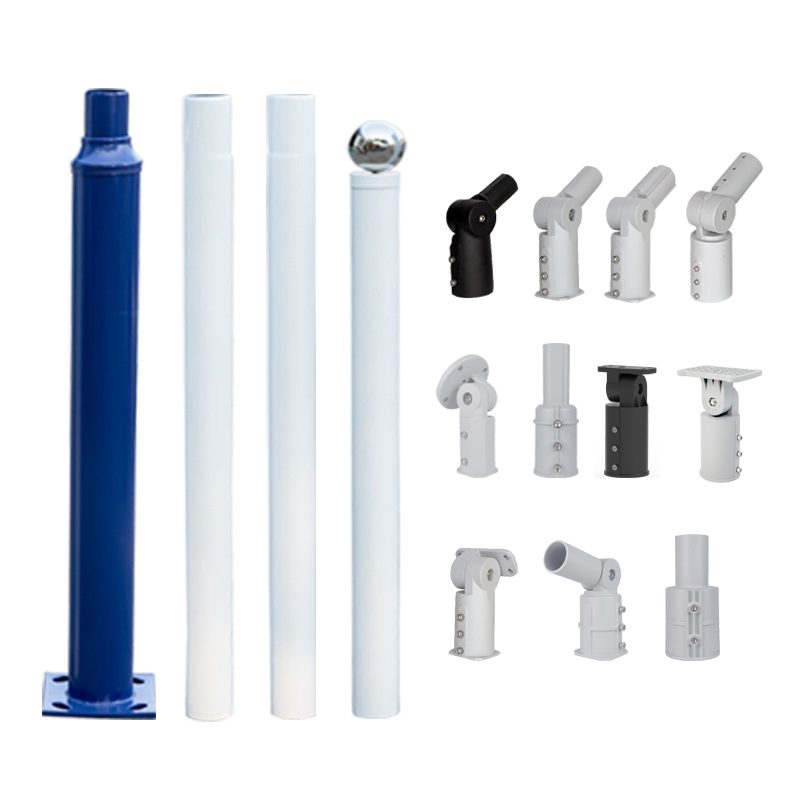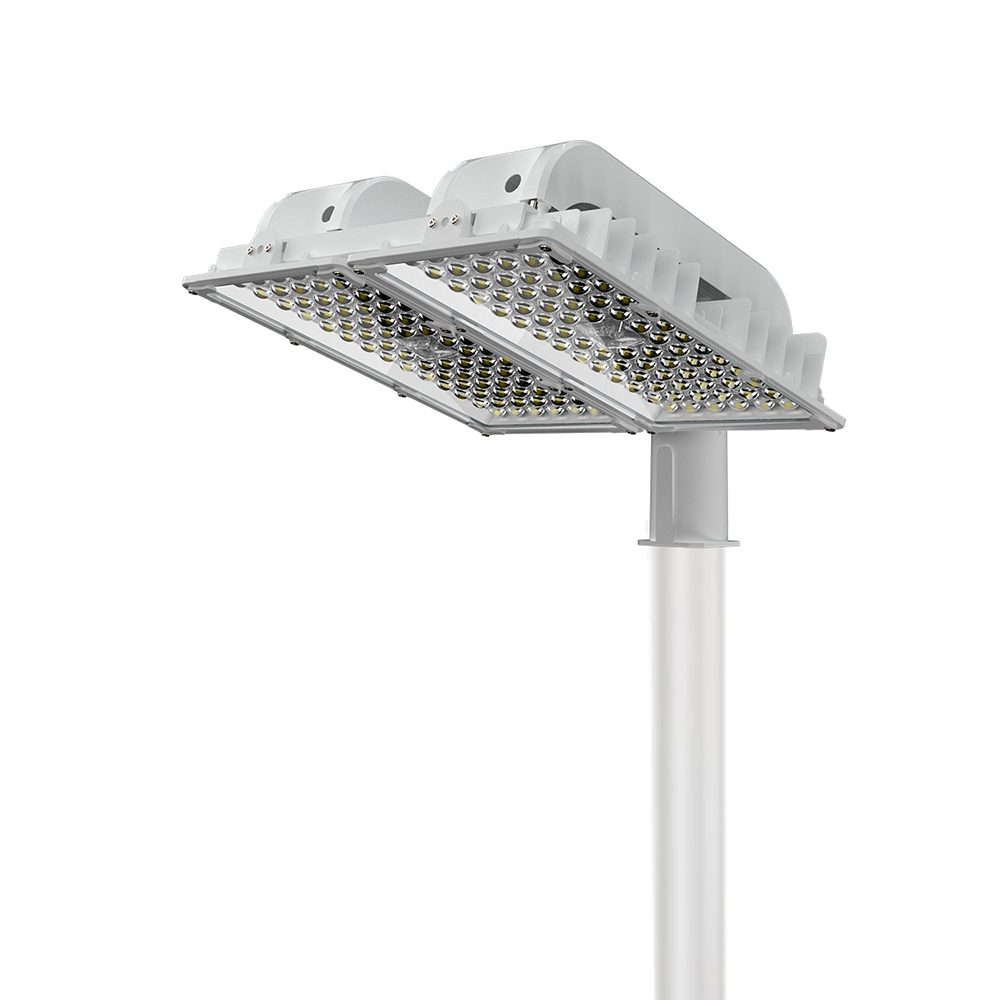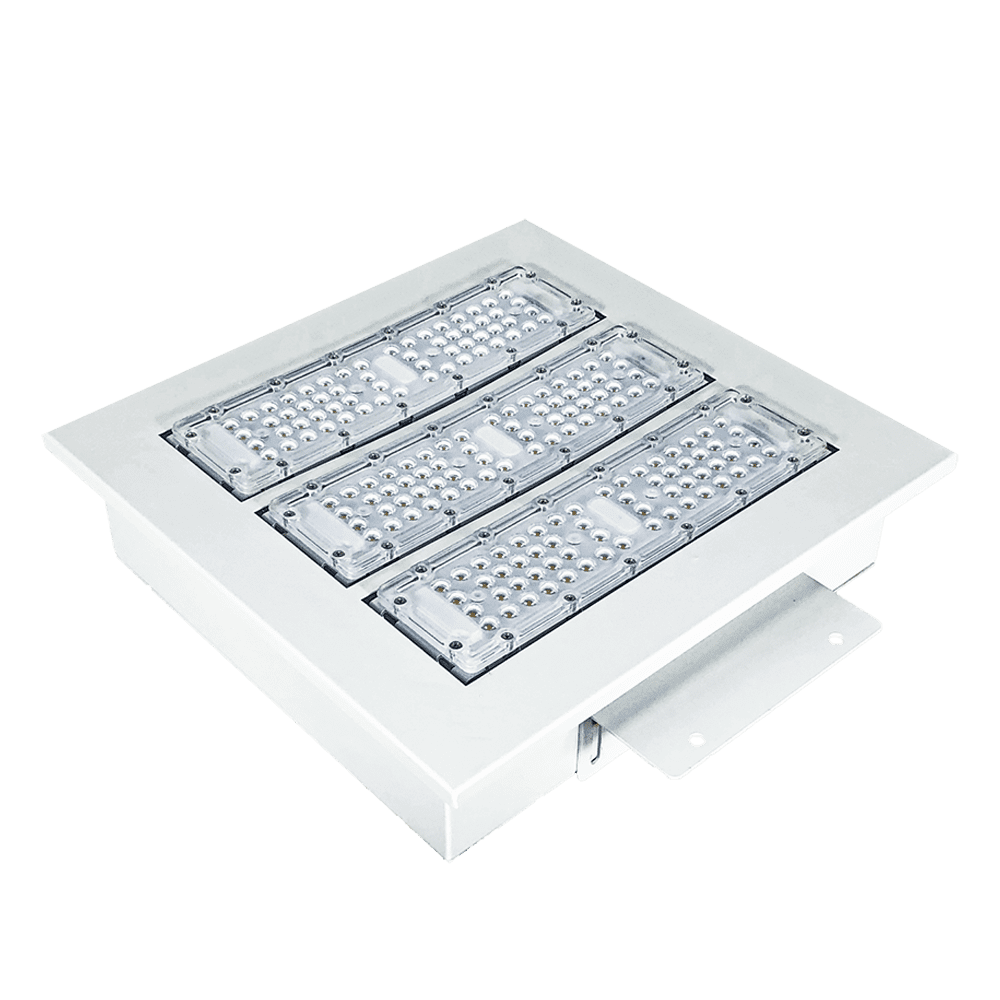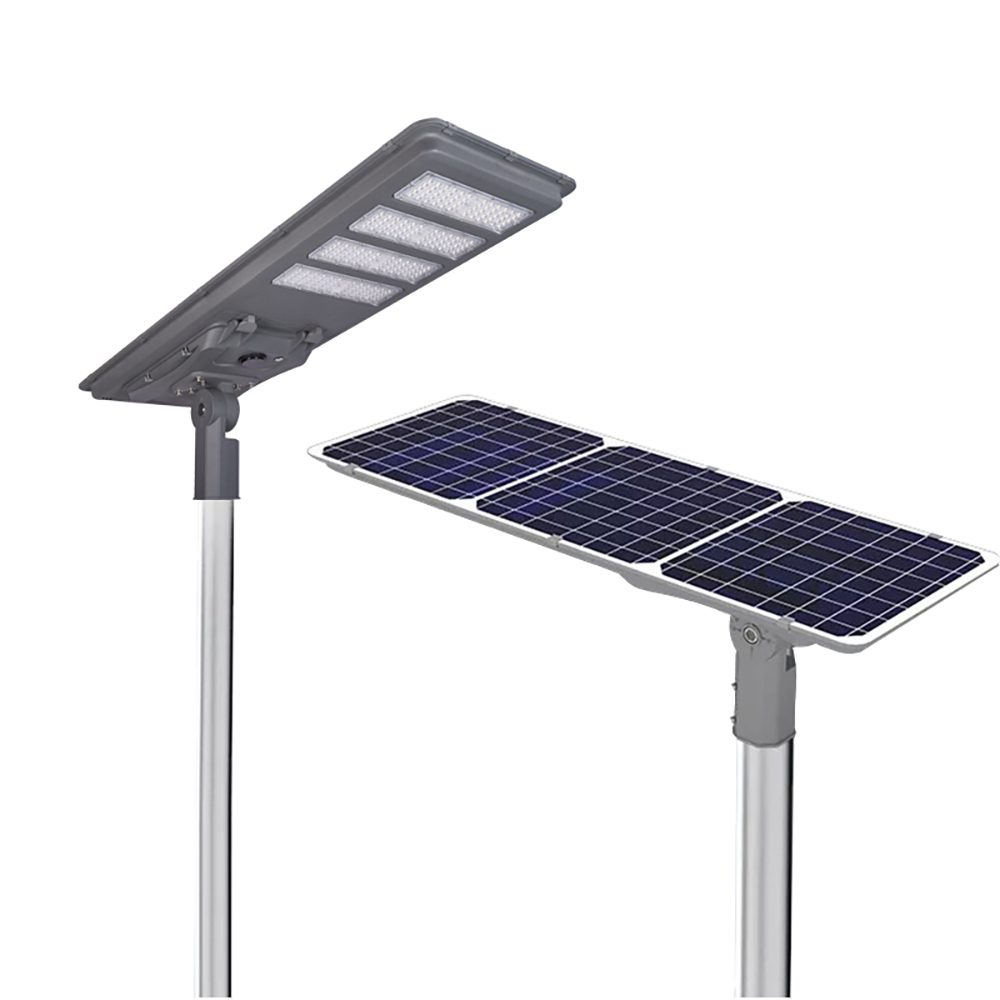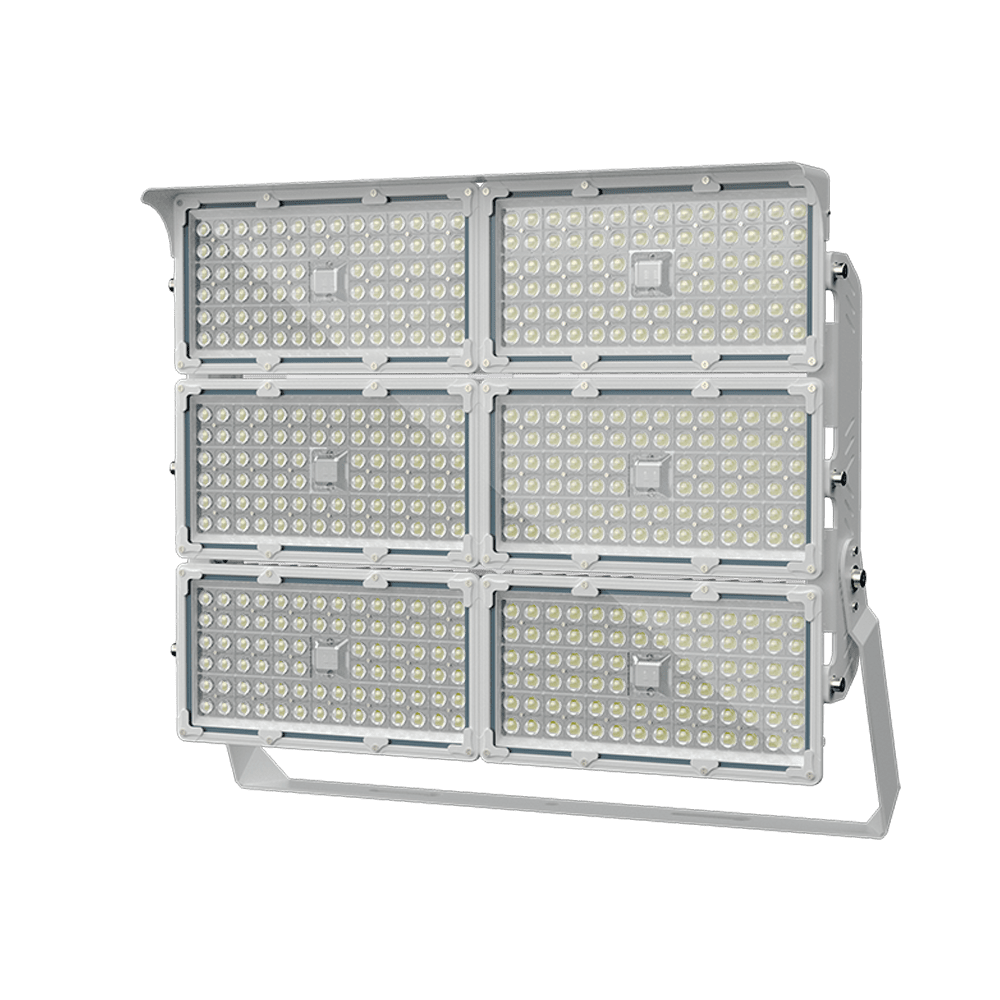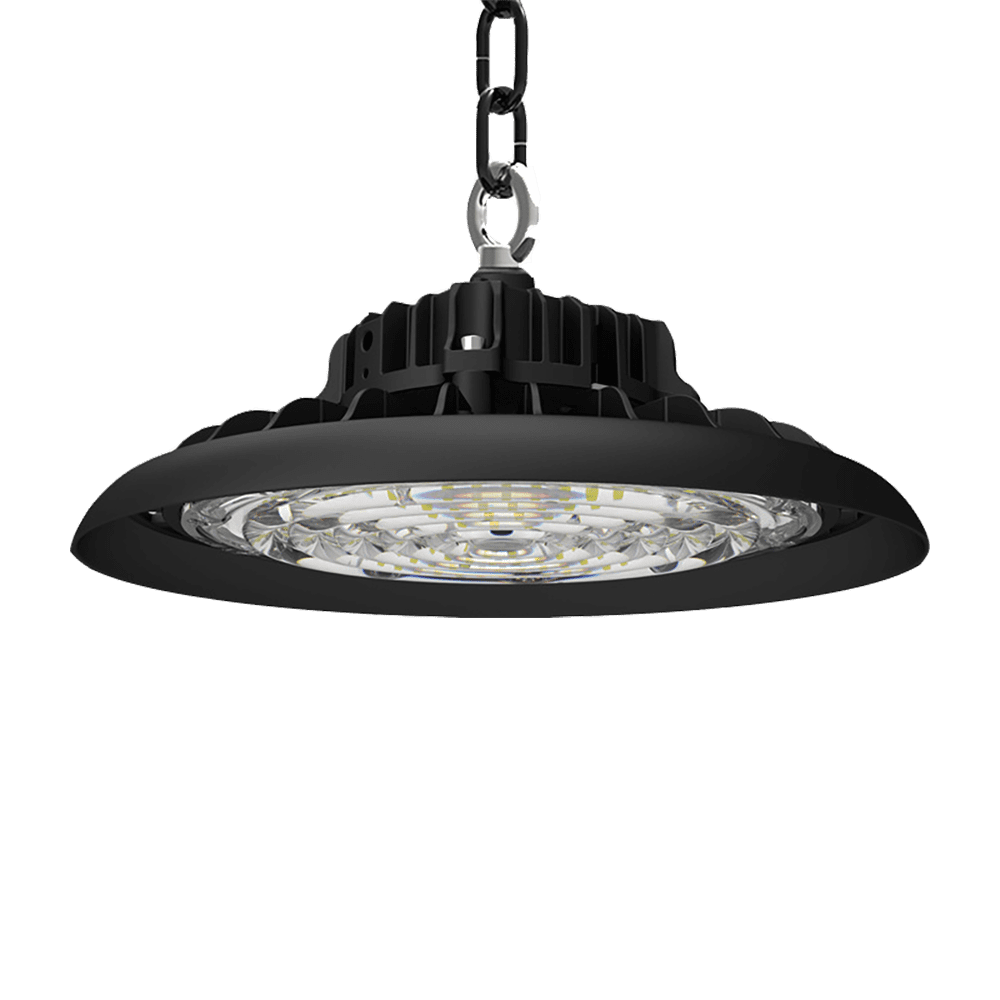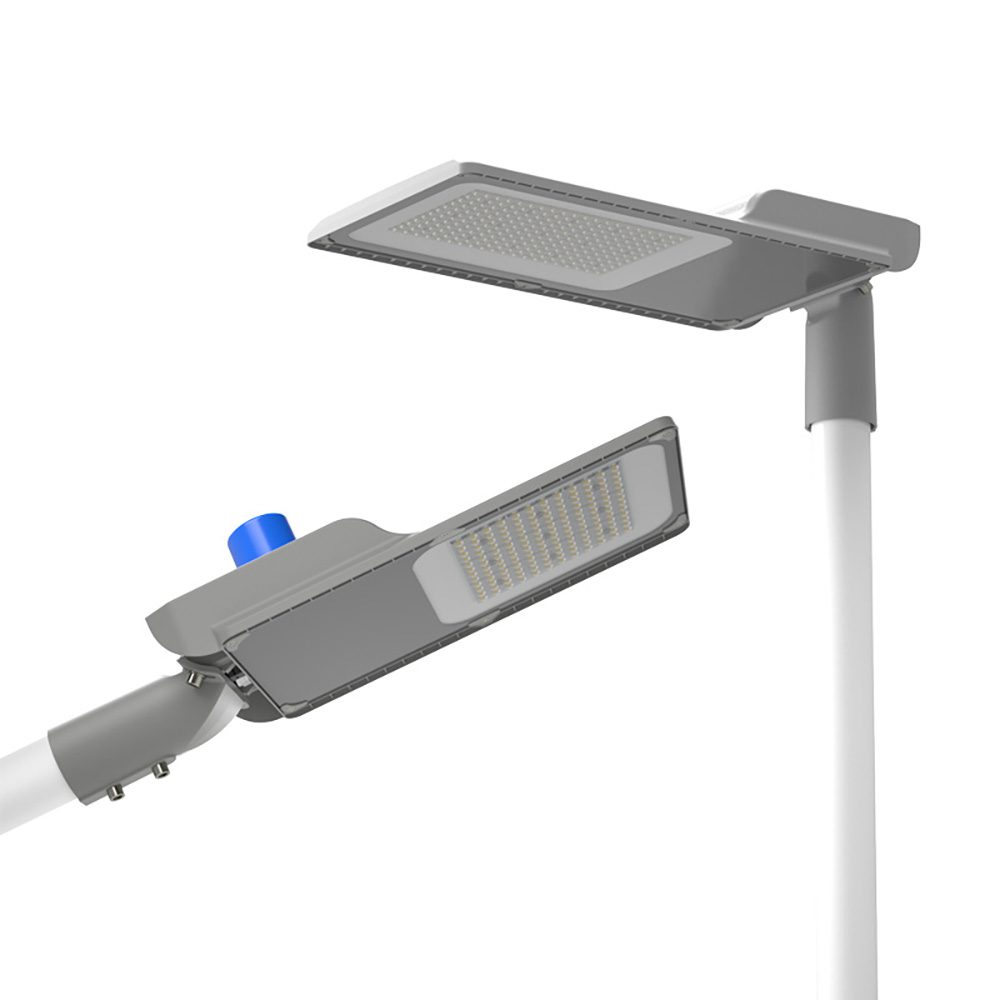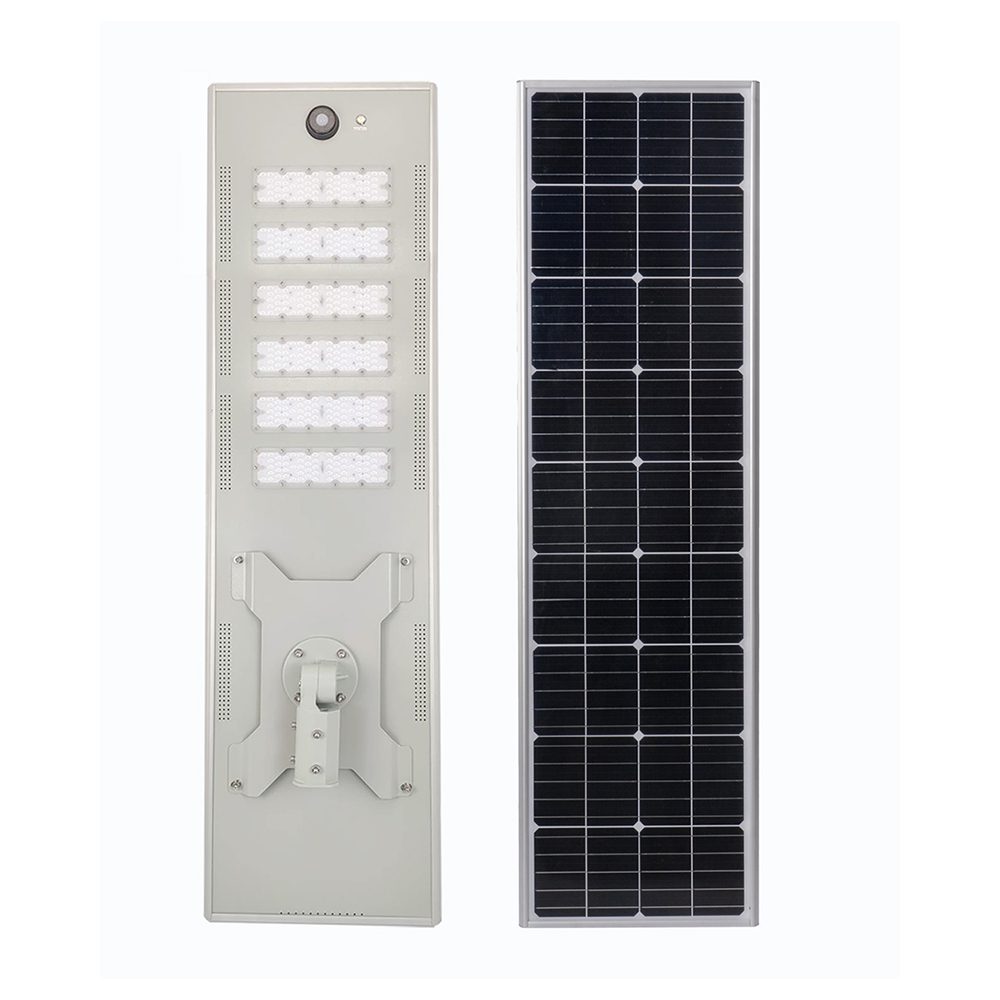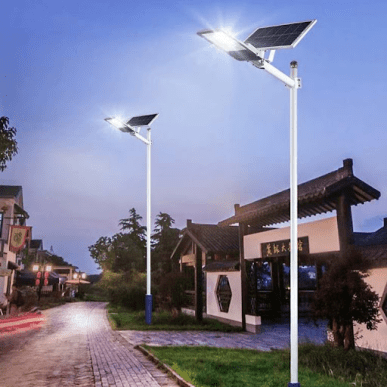As renewable energy technologies continue to develop, solar street lights have become a popular choice for urban and rural lighting. Among the various types of solar street lights, integrated solar street lights and split solar street lights are the two main forms. This article will explore the differences, characteristics, advantages, applicable locations, and maintenance methods of these two types.
Integrated Solar Street Lights
1.Characteristics
Integrated solar street lights combine the lamp, solar panel, battery, and controller into a single unit. Their design is typically sleek and aesthetic, making installation straightforward.
2.Advantages
Easy Installation: The integrated design simplifies the installation process, usually requiring only mounting on a lamp post without complex wiring.
Aesthetic Appeal: The streamlined design of integrated solar street lights is more visually appealing, making them suitable for modern urban environments and enhancing the overall aesthetic.
Low Maintenance: With a compact internal structure and fewer external joints, the failure rate is reduced, leading to lower maintenance needs.
3.Applicable Locations
Integrated solar street lights are suitable for urban roads, squares, parks, and sidewalks where aesthetic and convenient lighting is required. Their sleek design is often used in landscape lighting and upscale residential areas.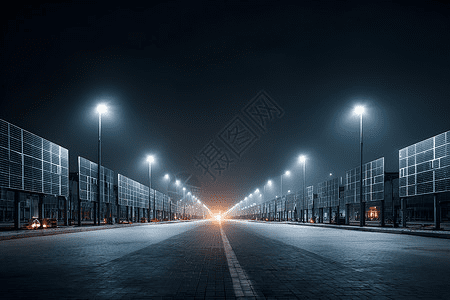
4.Maintenance Methods
Regular checks of the cleanliness of the solar panels are necessary to ensure optimal light reception. If a fault occurs, due to the tight integration of components, professional assistance may be needed for repairs.
Split Solar Street Lights
1.Characteristics
Split solar street lights consist of two main components: the light source and the solar panel, which can be installed independently. This design allows users to select the best installation position based on the specific environment.
2.Advantages
High Flexibility: The split design allows users to adjust the position of the solar panel to maximize sunlight exposure, thereby improving charging efficiency.
Good Adaptability: In varied terrains and environments, split solar street lights can better meet lighting needs. For instance, in areas with many trees, the solar panel can be mounted higher to avoid shading.
Ease of Maintenance: Since components are installed separately, maintenance can be performed on the light source or battery individually, reducing the overall complexity of repairs.
3.Applicable Locations
Split solar street lights are well-suited for rural roads, remote areas, industrial zones, and campuses. They excel in locations requiring extensive coverage or where electricity supply is limited.
4.Maintenance Methods
The maintenance of split solar street lights is relatively straightforward. Users can regularly clean the solar panels and fixtures and check the battery status. Since components are separate, if one part fails, it can be replaced or repaired individually, lowering overall costs.
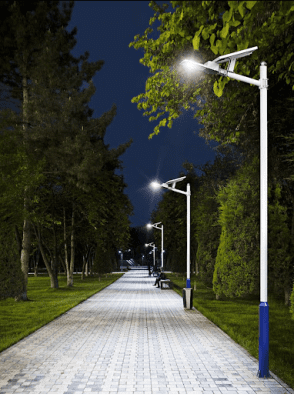
Integrated and split solar street lights each have unique advantages and suitable application scenarios. The former is favored for its aesthetic and convenient installation in urban public spaces, while the latter is preferred for its flexibility and adaptability in rural or varied environments.
When choosing solar street lights, users should consider specific lighting needs, environmental characteristics, and maintenance capabilities to determine which type is more suitable. Regardless of the choice, the use of solar street lights will play an important role in energy conservation, environmental protection, and enhancing the quality of life.

